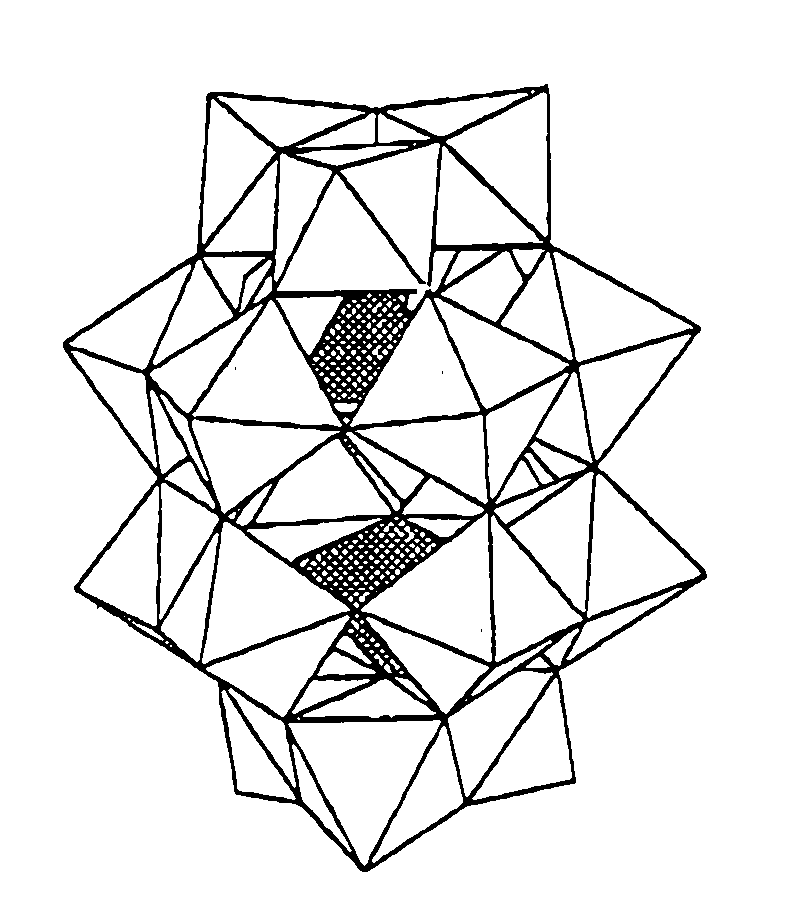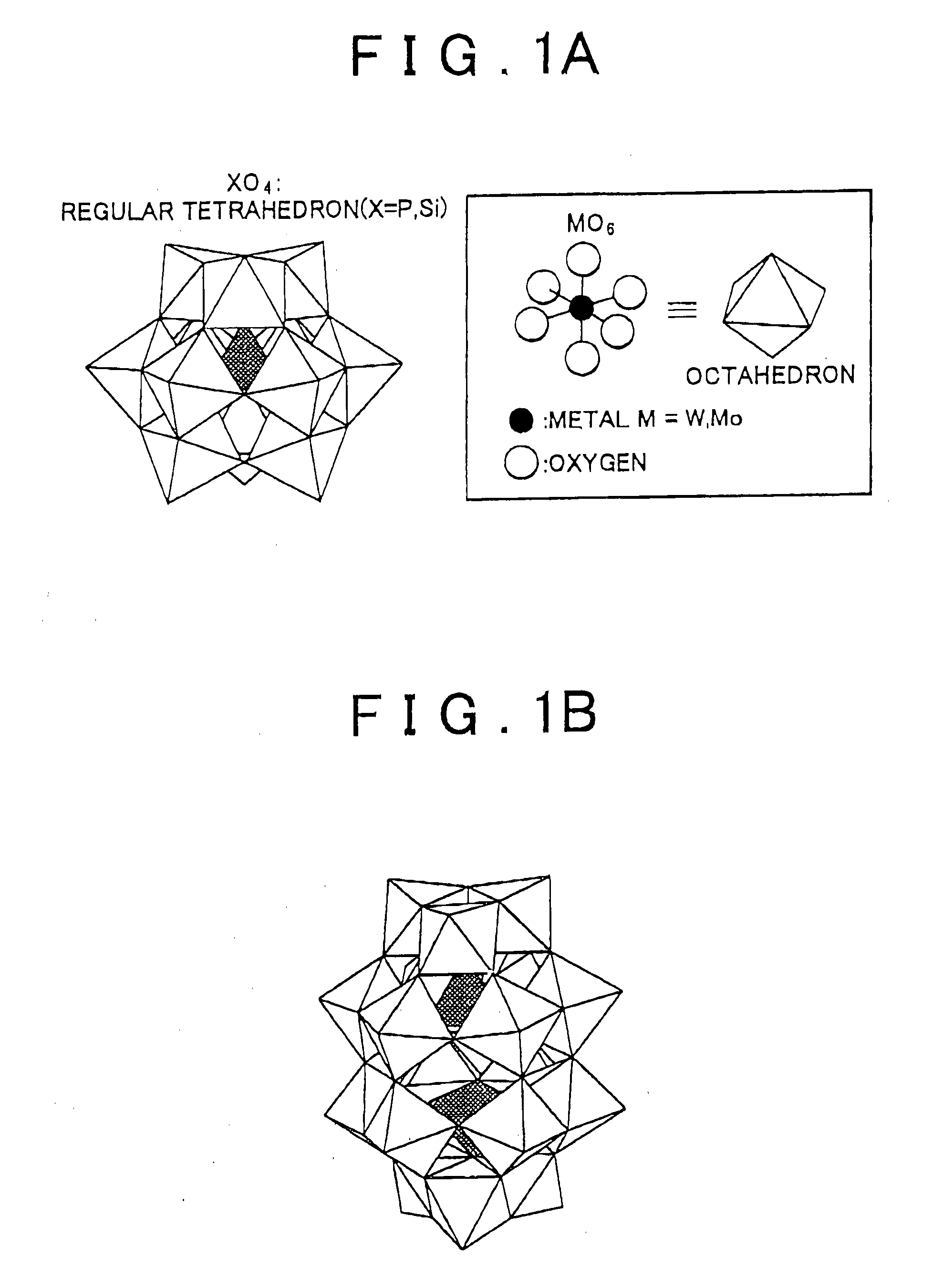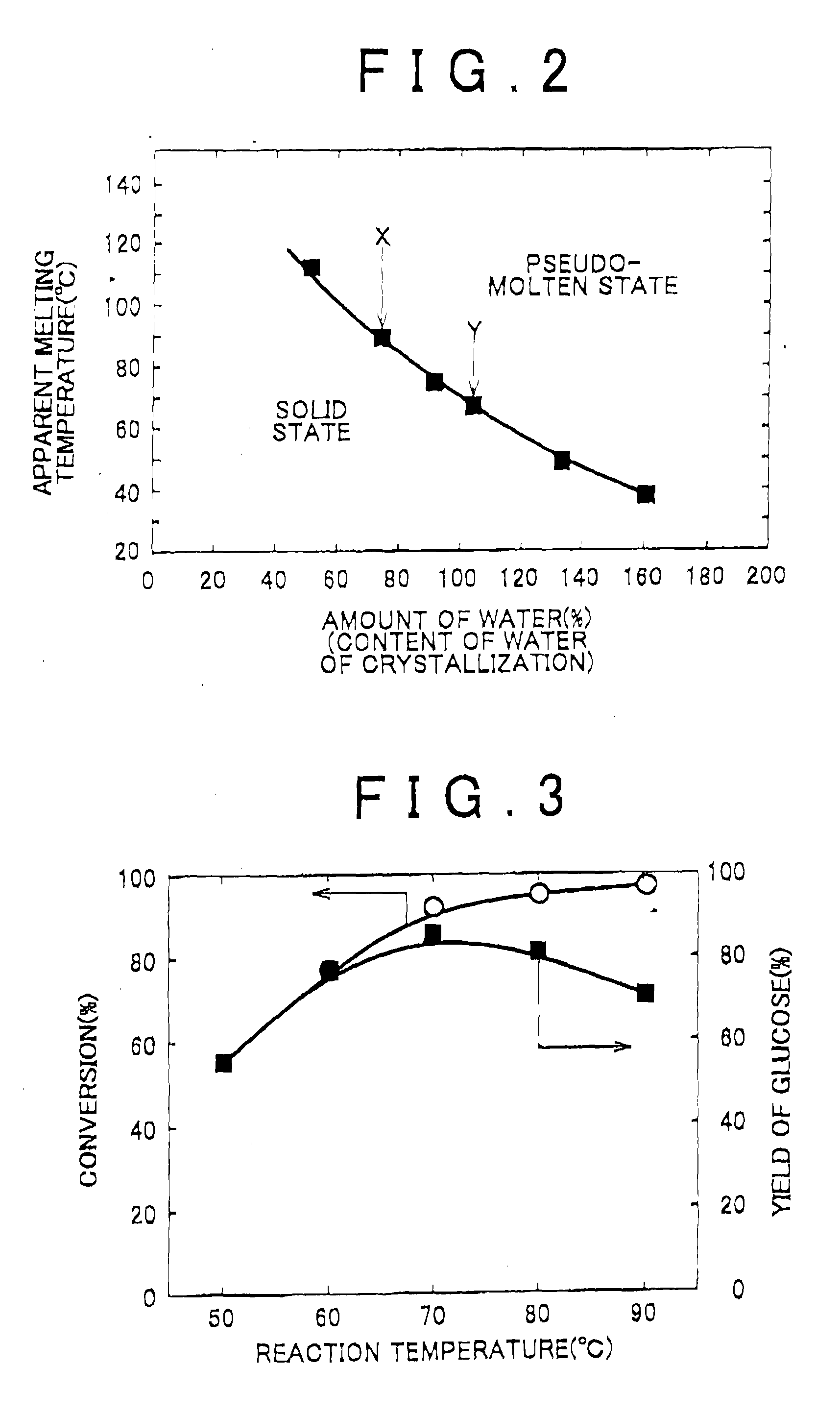Plant-fiber-material transformation method
a plant fiber and material technology, applied in the field of plant fiber material transformation, can solve the problems of difficult to completely remove acid, troublesome and costly removal of acid by neutralization or ion exchange, and difficult to separate acid and saccharide, and achieve the effects of promoting hydrolysis of cellulose, easy separation, and excellent energy efficiency
- Summary
- Abstract
- Description
- Claims
- Application Information
AI Technical Summary
Benefits of technology
Problems solved by technology
Method used
Image
Examples
example 1
[0094]As described below, the conversion of cellulose and the selectivity for the production of glucose were measured at some hydrolysis reaction temperatures (temperatures of pseudo-molten material: 50° C., 60° C., 70° C., 80° C., 90° C.). First, 1 kg of phosphotungstic acid (the content rate of water of crystallization was 160%; the diameter was about 2 nm) and 0.5 kg (dry weight) of cellulose were mixed, put in a closed container (located on a hot plate), and heated. The phosphotungstic acid was brought into a pseudo-molten, stirrable state around 40° C. Then, the mixture was heated to the respective temperatures (50° C., 60° C., 70° C., 80° C., 90° C.) and was then stirred and subjected to hydrolysis reaction for three hours.
[0095]After the temperature was dropped to room temperature, 3 liters of ethanol was added to the mixture, in the closed container, of phosphotungstic acid that was brought from the pseudo-molten state to a solid state, saccharide, most of which was glucose,...
example 2
[0098]Bagasse was pulverized by a pulverizer into powder whose particle size was about ten-odd microns, and 0.3 kg (dry weight) of this powder and 1 kg of phosphotungstic acid (the content of water of crystallization was unknown; the diameter was about 2 nm) were mixed, put in a closed container, and heated. The phosphotungstic acid was brought into a pseudo-molten, stirrable state around 40° C. The mixture was heated to about 50° C. and then stirred for three hours.
[0099]After the temperature was dropped to room temperature, 3 liters of ethanol was added to the mixture A, in the closed container, of phosphotungstic acid that was brought from the pseudo-molten state to a solid state, saccharide, most of which was glucose, that was produced by hydrolysis of cellulose, and fiber (including transformed material), such as lignin, and the mixture A was then stirred for 30 minutes. Although the phosphotungstic acid was dissolved in the added ethanol, the saccharide was not dissolved in th...
example 3
[0101]Wood chips were crushed, subjected to a steam process for two hours, and then pulverized by a pulverizer into powder whose particle size was about ten-odd microns, and 0.3 kg (dry weight) of this powder and about 1 kg of phosphotungstic acid (the content of water of crystallization was unknown) were mixed, put in a closed container, and heated. The phosphotungstic acid was brought into a pseudo-molten, stirrable state around 40° C. The mixture was heated to about 70° C. and then stirred for three hours. Thereafter, in a way similar to that used in Example 2, phosphotungstic acid was collected, and the produced saccharide and the unreacted cellulose were separated. The yield of glucose was 0.21 kg, and that of xylose was 0.07 kg.
PUM
| Property | Measurement | Unit |
|---|---|---|
| Temperature | aaaaa | aaaaa |
| Temperature | aaaaa | aaaaa |
| Temperature | aaaaa | aaaaa |
Abstract
Description
Claims
Application Information
 Login to View More
Login to View More - R&D
- Intellectual Property
- Life Sciences
- Materials
- Tech Scout
- Unparalleled Data Quality
- Higher Quality Content
- 60% Fewer Hallucinations
Browse by: Latest US Patents, China's latest patents, Technical Efficacy Thesaurus, Application Domain, Technology Topic, Popular Technical Reports.
© 2025 PatSnap. All rights reserved.Legal|Privacy policy|Modern Slavery Act Transparency Statement|Sitemap|About US| Contact US: help@patsnap.com



